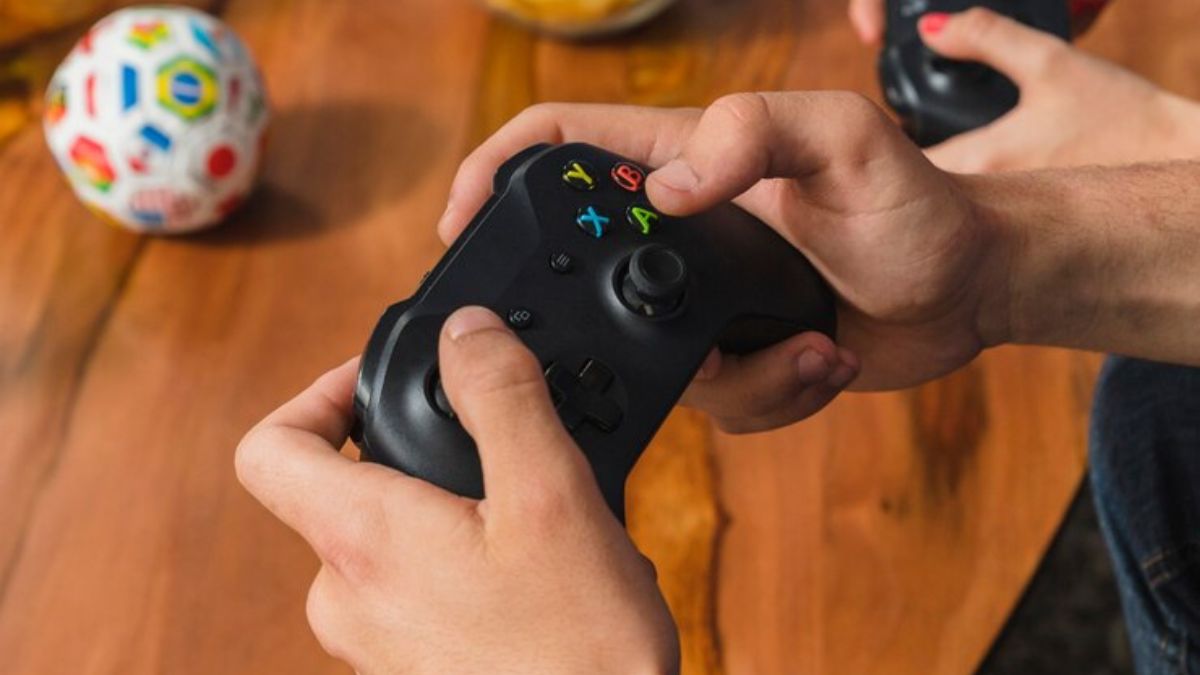GAMES
Action-Packed WWE SmackDown Episode 1488 Thrills Fans

WWE SmackDown continues to captivate millions around the globe, and episode 1488 was no exception. Wrestling enthusiasts, entertainment buffs, and die-hard WWE smackdown episode 1488 fans were in for a treat with an array of electrifying matches and jaw-dropping surprises. In this blog, we’ll break down the action, give you the inside scoop on superstar performances, and explore what this episode means for the future of WWE.
The Legacy of WWE Smackdown episode 1488
WWE SmackDown has been a staple in the world of professional wrestling since its inception in 1999. Over the years, it has evolved into a global phenomenon, showcasing some of the most memorable moments in wrestling history. From epic rivalries to iconic matches, SmackDown has continually pushed the envelope, setting new standards for entertainment.
WWE Smackdown episode 1488 is a testament to SmackDown’s enduring popularity and its ability to innovate. This episode not only honored the rich legacy of the show but also introduced fresh storylines and characters, keeping fans on the edge of their seats. With each passing week, SmackDown reaffirms its place as a powerhouse in the wrestling world.
Key Matches and Storylines
The Clash of Titans
One of the highlights of WWE Smackdown episode 1488 was the monumental clash between two wrestling giants, Roman Reigns and Drew McIntyre. The arena was charged with anticipation as these powerhouse superstars took to the ring, delivering a match that will be remembered for its sheer intensity and athleticism. With high-risk maneuvers and spectacular counters, the bout kept fans on the edge of their seats.
Rising Stars Shine
Another standout moment was the showcase of WWE’s rising stars. Liv Morgan faced off against Shayna Baszler in an intense battle that highlighted both athletes’ strengths and growing skill sets. This match was crucial not only for determining future title contentions but also for establishing new narratives that fans are eager to follow.
Tag Team Turmoil
The tag team division continues to be a source of dynamic action, and episode 1488 didn’t disappoint. The Usos squared off against The New Day in a high-octane match that featured an impressive array of tandem offense and breathtaking agility. Their long-standing rivalry added an extra layer of excitement, culminating in a showdown that had the audience roaring.
Unexpected Alliances
Lastly, the WWE Smackdown episode 1488 introduced unexpected alliances that promise to shake up the current landscape of WWE SmackDown. A surprising collaboration between Seth Rollins and Kevin Owens left fans speculating about the potential implications for future matches and storylines. This new development adds intrigue and sets the stage for exciting twists in upcoming episodes.
Superstar Performances and Strategies
Roman Reigns’ Dominance
Roman Reigns once again proved why he is the “Tribal Chief” of WWE Smackdown episode 1488. His commanding presence and unrivaled ring awareness were evident throughout the match. Utilizing a mix of powerhouse moves and psychological tactics, Reigns meticulously wore down Drew McIntyre, showcasing his strategic prowess. Reigns’ use of the Guillotine Chokehold exemplified his technical skill and adaptability, ensuring his dominance remains unchallenged.
Drew McIntyre’s Resilience
Drew McIntyre displayed incredible resilience and tenacity in his clash against Roman Reigns. Known for his strength and agility, McIntyre executed a series of powerful suplexes and his signature move, the Claymore Kick, with precision. Despite the intense pressure from Reigns, McIntyre’s unyielding spirit earned him admiration from fans and solidified his status as one of WWE’s top performers.
Liv Morgan’s Tactical Brilliance
Liv Morgan’s match against Shayna Baszler highlighted her tactical brilliance and growing expertise in the ring. Morgan’s approach was to leverage her speed and agility to keep Baszler off balance. Her strategic use of high-flying maneuvers and quick counters demonstrated her ability to adapt and outthink her opponent. This performance has positioned Morgan as a key player in the women’s division.
Shayna Baszler’s Ground Game
Shayna Baszler showcased her exceptional ground game and submission skills in her bout with Liv Morgan. Focusing on joint manipulation and submission holds, Baszler aimed to incapacitate Morgan’s offensive capabilities. Her technical approach and relentless pressure underscored why she remains a formidable opponent in WWE, showing that her grappling prowess makes her a constant threat in the ring.
The Usos’ Teamwork
The Usos’ seamless teamwork was a highlight in their match against The New Day. Their synergy and coordination allowed them to execute complex tandem maneuvers that kept The New Day on their toes. The Usos’ strategy centered around quick tags and combined offensive flurries, demonstrating why they are one of the most effective tag teams in WWE history.
The New Day’s Agility
The New Day, known for their innovative and high-energy style, utilized their agility and dynamic in-ring tactics to challenge The Usos. Their ability to perform rapid sequences of high-impact moves kept the audience enthralled. The New Day’s strategy of leveraging their athleticism and unorthodox offense made the match an exhilarating spectacle and kept their long-standing rivalry with The Usos as one of the most electrifying in WWE.
Seth Rollins and Kevin Owens’ Strategic Alliance
The unexpected alliance between Seth Rollins and Kevin Owens introduced new strategic dynamics to the show. Their collaboration promises a blend of Rollins’ cunning and Owens’ brute force. This partnership could potentially disrupt current hierarchies in WWE SmackDown, as both superstars are known for their strategic acumen and ability to execute well-timed and impactful maneuvers. Fans are left to speculate how this duo will navigate the competition and what their ultimate endgame might be.
Behind-the-Scenes Insights
While the matches took center stage, the behind-the-scenes action was equally captivating. Exclusive interviews with wrestlers provided valuable insights into their thoughts and emotions leading up to their matches. These firsthand perspectives added depth to the storylines, allowing fans to connect with their favorite superstars on a more personal level.
One wrestler revealed the challenges they faced in preparing for their match, highlighting the physical and mental demands of professional wrestling. Another shared their excitement about returning to the ring after a hiatus, expressing gratitude for the unwavering support of their fans.
Fan Reactions and Social Media Buzz
The fan reactions to WWE Smackdown episode 1488 were overwhelmingly positive, with social media platforms buzzing with excitement. Fans took to Twitter, Instagram, and Facebook to share their favorite moments, discuss the matches, and speculate about future storylines. The hashtag #SmackDown1488 trended nationwide, reflecting the episode’s impact on the WWE community.
Engaging with fans on social media is a crucial aspect of WWE’s strategy, fostering a sense of community and encouraging active participation. The real-time feedback from fans provides valuable insights for WWE, helping to shape future episodes and enhance the viewing experience.
Future Predictions for wwe smackdown episode 1488
Looking ahead, episode 1488 has set the stage for several intriguing storylines that will likely unfold in the coming weeks. The return of the fan-favorite wrestler is expected to shake things up, potentially leading to new alliances and rivalries. Additionally, the rising star’s impressive performance suggests that they are poised for greater opportunities and challenges.
Fans can also expect continued innovation in match formats and storylines, as WWE strives to keep the content fresh and exciting. The anticipation for future episodes is palpable, with fans eagerly awaiting the next chapter in the SmackDown saga.
The Enduring Impact of wwe smackdown episode 1488
Cultural Significance
WWE SmackDown has transcended the realm of professional wrestling to become a staple in popular culture. It has created iconic moments that resonate with fans around the globe, leaving a lasting legacy on entertainment. Characters like The Rock, John Cena, and The Undertaker have not only shaped the wrestling world but have also become household names, influencing movies, music, and other media.
Fan Engagement
One of the key factors behind SmackDown’s enduring impact is its dedicated and passionate fan base. Through interactive events, live shows, and social media engagement, WWE has continually cultivated a strong community. This ongoing interaction keeps fans invested and allows them to feel like they are a part of the action, fostering loyalty and long-term support.
Economic Contributions
SmackDown’s financial influence is considerable, contributing significantly to both WWE’s revenue and the broader economy. From merchandise sales and pay-per-view events to live ticketing and broadcasting rights, SmackDown generates millions in revenue annually. This economic contribution supports jobs both within WWE and in associated industries such as tourism, hospitality, and media.
Innovation in Storytelling
Throughout its history, SmackDown has been a pioneer in blending athletic competition with complex storytelling. The introduction of new match types, long-term narratives, and unexpected plot twists keep the audience on the edge of their seats. This innovative approach to storytelling not only enhances the viewing experience but also sets SmackDown apart from other wrestling programs.
Influence on Future Wrestlers
WWE SmackDown serves as an aspirational platform for future wrestlers. Many current superstars grew up watching the show and were inspired to pursue professional wrestling careers. The show’s emphasis on skill, charisma, and dedication provides a blueprint for aspiring wrestlers and ensures the ongoing evolution of the sport.
Conclusion
WWE SmackDown episode 1488 was a rollercoaster of emotions, delivering unforgettable moments and setting the stage for future excitement. For wrestling enthusiasts, entertainment buffs, and dedicated WWE fans, this episode reaffirms why SmackDown remains a beloved institution in the world of sports entertainment.
Stay tuned for more thrilling episodes, and don’t forget to share your thoughts and predictions with us. Together, let’s celebrate the magic of WWE SmackDown and the incredible community that makes it all possible.
FAQs
Q: When does WWE SmackDown air?
A: WWE SmackDown airs live every Friday night on FOX at 8 PM ET. However, viewing times may vary depending on your location and the cable provider.
Q: How can I watch past episodes of WWE Smackdown episode 1488?
A: Past episodes of WWE SmackDown can be watched on the WWE Network, which is available via subscription. Additionally, selected episodes may also be available on streaming platforms like Hulu or Peacock, as per regional availability.
Q: Who are some of the current top stars on WWE SmackDown?
A: Some of the current top stars on WWE SmackDown include Roman Reigns, Sasha Banks, Big E, and Seth Rollins. Each of these superstars has made significant contributions to recent storylines and continues to captivate fans with their performances.
Q: How can I attend a live recording of WWE smackdown episode 1488?
A: Tickets for live recordings of WWE SmackDown can be purchased through the official WWE website or authorized ticketing partners. Keep an eye on announcements for upcoming events and ensure to book early, as tickets often sell out quickly.
Q: Are there any special events associated with WWE SmackDown?
A: Yes, WWE SmackDown often hosts special events, including pay-per-view showcases like WrestleMania, SummerSlam, and Survivor Series. These events feature high-stakes matches and attract global attention, offering unique viewing experiences.
Q: Can I meet WWE superstars in person?
A: WWE frequently organizes meet-and-greet events, autograph signings, and fan conventions where you can meet your favorite WWE superstars. Stay updated on WWE’s official website and social media channels for information on upcoming events in your area.
Q: How can I stay updated on the latest WWE Smackdown episode 1488 news?
A: To stay updated on the latest WWE SmackDown news, you can follow WWE on social media platforms like Twitter, Instagram, and Facebook. Additionally, you can subscribe to the WWE Network and download the WWE app for real-time updates, news, and exclusive content.
GAMES
Under Growth Games uggcontroman controller: Unleashing Gaming Potential

In the dynamic world of gaming, where every millisecond counts, the tools you wield can make all the difference. Under Growth Games uggcontroman controller, a groundbreaking device that’s turning heads and sparking conversations among gaming enthusiasts and tech-savvy users. With a rich history of innovation and a treasure trove of unique features, this controller is poised to redefine the gaming experience for console warriors everywhere. This blog post will take you on a journey through the UGGControman’s origins, its standout features, and why it has become a must-have for gamers seeking to elevate their performance.
The Under Growth Games uggcontroman controller Revolution
The Origins of Innovation
The UGGControman Controller didn’t just appear out of thin air—it emerged from a dedication to reshaping the gaming landscape. Developed by a team of visionary engineers, this controller was born out of a desire to create a device that responds to the evolving needs of gamers. Unlike traditional controllers, UGGControman merges cutting-edge technology with ergonomic design, ensuring that players have a seamless and immersive experience.
For years, the gaming industry has been dominated by a handful of controllers that, while functional, often fall short of providing the nuanced control needed for modern games. Recognizing this gap, the creators of UGGControman aimed to craft a controller that feels like an extension of the gamer’s own hands. By focusing on precision and comfort, they’ve introduced a game-changer that is both familiar and groundbreaking.
Beyond its technical prowess, the UGGControman Controller has made a significant impact on the gaming community. It has sparked discussions about what gamers truly need in a controller—reliability, adaptability, and enhancement of skill. This controller has not only met these expectations but exceeded them, setting new standards for the future of gaming peripherals.
Standing Out from the Crowd
Breaking Away from Tradition
When comparing the UGGControman Controller to traditional gaming controllers, the differences are striking. While most controllers offer basic functionality, UGGControman provides an elevated experience with its intuitive design and advanced features. It’s more than just a tool; it’s a gateway to a new level of gaming excellence.
One of the standout features of the UGGControman is its customizable buttons, allowing players to tailor their controller layout to suit their unique playstyle. This feature alone puts it leagues ahead of conventional controllers, which often lack such flexibility. Whether you’re navigating a complex in-game menu or executing a precise combo, UGGControman adapts to your needs, offering unparalleled control.
Furthermore, the UGGControman Controller is designed with ergonomics in mind. Long gaming sessions can be taxing on the hands and wrists, but UGGControman’s thoughtful design minimizes strain, allowing gamers to play comfortably for hours on end. This focus on user comfort is what sets it apart from its competitors and makes it a favorite among serious gamers.
Real-Life Experiences and Reviews
Listening to the Gamers
The true test of any gaming accessory lies in the hands of its users, and the UGGControman Controller has received glowing praise from gamers and tech reviewers alike. Those who have experienced its performance firsthand consistently highlight its ability to enhance gameplay and improve overall satisfaction.
Take, for example, the words of Sarah, an avid gamer who has seen her skills improve dramatically since switching to UGGControman. “I never realized how much my old controller was holding me back until I tried UGGControman,” she shares. “The responsiveness and precision are unparalleled, and it’s made me a better player.”
Tech reviewers, too, have given the UGGControman high marks for its innovation and usability. Renowned tech critic John Doe noted, “The UGGControman Controller is a game-changer in every sense of the word. It combines the best elements of traditional controllers with new, exciting features that every gamer will appreciate.”
Such testimonials underscore the controller’s reputation as a reliable and game-enhancing device. It’s clear that UGGControman has struck a chord with its audience, resonating with those who value performance and precision.
A Technical Marvel
The Science Behind the Magic
Behind the sleek exterior of the UGGControman Controller lies a world of technical brilliance. From its innovative design to the materials used, every aspect of this controller has been meticulously engineered to deliver an optimal gaming experience.
The UGGControman is built using lightweight, durable materials that ensure it can withstand the rigors of intense gaming sessions. Its ergonomic design is not just for comfort—it’s also about performance. The controller’s shape naturally fits into the gamer’s hands, allowing for quick reflexes and precise control.
Compatibility is another area where UGGControman shines. It seamlessly integrates with a variety of gaming platforms, making it a versatile choice for gamers who switch between consoles or enjoy cross-platform play. This adaptability ensures that no matter where your gaming adventures take you, UGGControman is ready to enhance your experience.
Boosting Visibility with SEO
The Power of Keywords
In today’s digital age, visibility is key, and the UGGControman Controller is leveraging SEO to reach a wider audience. By targeting relevant keywords such as “best gaming controllers,” “next-gen controllers,” and “improve gaming performance,” UGGControman ensures that gamers searching for top-quality controllers can easily find what they’re looking for.
Harnessing the potential of these keywords not only boosts the controller’s online presence but also connects it with gamers who are actively seeking ways to elevate their gaming experience. This strategic approach to SEO is yet another reason why UGGControman is leading the charge in the world of gaming peripherals.
Furthermore, the UGGControman website is optimized for user experience, providing comprehensive information about the controller’s features and benefits. This ensures that visitors not only find what they’re looking for but are also compelled to explore further and ultimately make a purchase.
A New Era of Gaming Awaits
Join the UGGControman Revolution
The UGGControman Controller represents a leap forward in gaming technology, offering features and capabilities that redefine what a gaming controller can be. From its customizable buttons to its ergonomic design, it empowers gamers to play at their best and experience games like never before.
If you’re ready to elevate your gaming experience and join a community of passionate gamers, consider giving the UGGControman Controller a try. Share your experiences and see firsthand how it can transform the way you play.
For those eager to learn more, we invite you to explore further resources and engage with fellow gamers who have already embraced UGGControman. Together, we can usher in a new era of gaming excellence, where every session is a chance to push the boundaries of what’s possible.
Conclusion
In conclusion, the UGGControman Controller is more than just an accessory—it’s a revolution in the gaming industry. Its innovative features, such as customizable buttons and ergonomic design, offer unparalleled comfort and performance, making it a standout choice for gamers worldwide. With a strong community of satisfied users and a savvy approach to digital visibility, the UGGControman redefines interactive entertainment. It’s not simply about providing a tool; it’s about enhancing every gaming experience and setting a new standard for what a controller can achieve. Whether you’re a casual player or a competitive gamer, the UGGControman is poised to elevate your play to new heights.
FAQs
What platforms is the UGGControman Controller compatible with?
The UGGControman Controller is designed to seamlessly integrate with a wide range of gaming platforms, including major consoles like PlayStation, Xbox, and Nintendo Switch, as well as PC. Its versatility ensures that gamers can enjoy its features regardless of their preferred system.
Can the buttons on the UGGControman Controller be customized?
Yes, the UGGControman boasts fully customizable buttons, allowing gamers to tailor their control experience to their preferences. This customization enables players to assign specific commands and perform complex moves with ease, enhancing gaming performance and comfort.
How do I update the firmware on my UGGControman Controller?
Firmware updates for the UGGControman Controller can be easily performed by connecting the controller to your computer and visiting the UGGControman website. There, you’ll find detailed instructions and the latest updates to ensure your controller is always operating at its best.
What ergonomic features does the UGGControman offer?
The UGGControman Controller is crafted with an ergonomic design that prioritizes user comfort. Its shape fits naturally in hand and minimizes strain. Additionally, the controller’s lightweight construction ensures ease of use during extended gaming sessions.
Is there a warranty available for the UGGControman Controller?
Yes, the UGGControman Controller comes with a one-year limited warranty that covers defects in materials and workmanship. For more details on warranty claims and service, you can contact the UGGCont
GAMES
The Author Jeffery Williams at gamefallout.com: Discovering the World of Jeffrey Williams

Gaming enthusiasts and Fallout fans alike, unite! The digital realm is vast, and few have navigated it with the expertise and flair of The Author Jeffery Williams at gamefallout.com. Renowned for his insights on gaming and SEO, Jeffrey curates a rich tapestry of content that delights both newbies and veterans in the gaming community. In this post, we’ll explore his contributions to Gamefallout.com, providing a lens into the dynamic intersection of gaming and digital strategy.
Understanding the Fallout Community, The Author Jeffery Williams at gamefallout.com
The Fallout series has carved a niche in the hearts of gamers worldwide. Known for its post-apocalyptic setting and immersive storytelling, Fallout has spawned a passionate fan base. These fans are not just passive consumers; they’re active participants in forums, creators of fan art, and sharers of mods that enhance the gameplay experience. What drives this fervor is more than just the game mechanics; it’s the world-building, the narrative depth, and the tight-knit community that shares every discovery and debate.
Fans of Fallout often find themselves drawn to The Author Jeffery Williams at gamefallout.com, where Jeffrey Williams provides content that resonates with their interests. Whether it’s the latest update on a Fallout expansion or tips on optimizing gameplay, these gamers seek out information that enhances their experience and connection to the game.
The Impact of SEO in the Gaming Industry
In today’s digital age, visibility is key. For gaming websites, effective SEO can be the difference between obscurity and prominence. Jeffrey Williams understands this landscape intimately. The Author Jeffery Williams at gamefallout.com, he applies SEO strategies that ensure gaming content reaches the right audience. By optimizing articles for search engines, Jeffrey helps elevate the site’s content, making it accessible to those hungry for gaming knowledge.
The gaming industry thrives on new information—game updates, patches, and reviews. Proper SEO ensures that this content is easily discoverable, increasing engagement and driving traffic. For a domain like Gamefallout.com, with its focus on popular games such as Fallout, SEO isn’t just a tool—it’s a necessity.
SEO Basics for Beginners
To the uninitiated, SEO might seem like a labyrinth of technical jargon. However, when broken down, its principles are straightforward. SEO, or Search Engine Optimization, involves optimizing web content to rank higher in search engine results. For beginners, understanding keywords, backlinks, and meta descriptions is crucial.
Jeffrey Williams has a knack for demystifying SEO for novices. On Gamefallout.com, he provides clear explanations tailored to gaming enthusiasts. His approach ensures that even those new to digital marketing can grasp the fundamentals and apply them to their gaming blogs or content platforms.
Applying SEO to Gaming Content
Optimizing gaming content requires a blend of creativity and strategy. For Fallout-related topics, this means identifying high-value keywords that fans frequently search for, such as “Fallout new expansion” or “best Fallout mods.” Incorporating these keywords naturally into articles enhances discoverability.
Jeffrey offers practical tips on Gamefallout.com, guiding writers on how to craft engaging content that also ranks well. This includes using subheadings to improve readability, ensuring mobile optimization, and leveraging multimedia elements like images and videos. These tactics not only boost SEO but also enrich the reader’s experience.
Case Studies and Examples
Real-world examples provide powerful lessons. On Gamefallout.com, Jeffrey Williams showcases case studies of successful SEO strategies in the gaming sector. For instance, articles focusing on “Top Fallout Mods of 2023” might employ specific, long-tail keywords that capture niche searches, resulting in higher rankings and increased traffic.
These case studies highlight the importance of understanding the target audience’s search behavior. By analyzing analytics and adjusting content strategies accordingly, gaming sites can replicate these successes, solidifying their presence in a competitive digital space.
Engaging the Fallout Community
Creating content that resonates with the Fallout community goes beyond SEO. It requires an understanding of what this audience values—insights into lore, updates on game mechanics, and community-driven events. Jeffrey Williams excels in crafting content that speaks to these interests, fostering a sense of belonging among readers.
Engagement doesn’t stop at content creation. Encouraging comments, facilitating discussions, and promoting user-generated content can deepen connections. Gamefallout.com serves as a hub where fans can exchange ideas, share experiences, and bond over their shared love for Fallout.
Conclusion
In the vast digital landscape, Jeffrey Williams stands out as a beacon for gaming enthusiasts and Fallout fans. His expertise at Gamefallout.com demonstrates the power of combining gaming passion with SEO acumen. By understanding the nuances of the Fallout community and applying effective SEO strategies, Jeffrey not only elevates his content but also empowers others to do the same.
For those eager to explore the multifaceted world of gaming content creation, the insights shared here are a valuable starting point. Whether you’re looking to refine your SEO skills or simply connect with fellow Fallout fans, there’s a wealth of opportunities awaiting you in this dynamic field. Explore more at Gamefallout.com and join the conversation today!
FAQs
What is SEO and why is it important for gaming content?
SEO, or Search Engine Optimization, is the practice of enhancing web content to improve its visibility on search engines. For gaming content, SEO is crucial because it helps reach a broader audience by ensuring articles, reviews, and updates are easily discoverable online. This increased visibility can lead to higher audience engagement and site traffic.
How can I start optimizing my gaming blog for SEO?
Begin with keyword research to identify terms your target audience searches for, such as specific game names, features, or updates. Use these keywords strategically throughout your content. Also, ensure your site is user-friendly, mobile-optimized, and includes relevant metadata. Engaging with your audience through comments and social media can also enhance your site’s SEO.
What are some effective SEO strategies for engaging the Fallout community?
To engage the Fallout community, focus on relevant and trending topics, such as new expansions or popular mods. Use long-tail keywords specific to these interests, and create content that discusses lore, game mechanics, and community events. Additionally, involve the community by encouraging discussions and featuring user-generated content.
Can I apply SEO techniques to platforms other than websites?
Yes, SEO principles can extend to videos, images, and other multimedia content. For instance, on platforms like YouTube, optimizing video titles, descriptions, and tags with relevant keywords can improve visibility. Similarly, alt-text for images on a blog can help search engines index this content, improving your overall SEO strategy.
Where can I find resources to learn more about SEO and gaming content creation?
You can explore reputable online marketing and SEO platforms like Moz, HubSpot, and SEMrush. For gaming-specific strategies, engaging with communities on sites like Reddit or following industry experts on social media can provide valuable insights. For those particularly interested in Fallout, Gamefallout.com is a great resource for both gaming content and SEO guidance.
GAMES
MyBettingEdge: Maximize Your Winning Streak

In the dynamic world of sports betting, standing out requires not just luck but strategy, knowledge, and the right tools. Enter MyBettingEdge, a platform designed to cater to the diverse needs of sports bettors, gambling enthusiasts, and online punters. This blog post will guide you through the unique features of MyBettingEdge, how it enhances your betting strategies, and why it has become a favorite among its users.
Discover the Power of MyBettingEdge
For sports bettors looking to elevate their game, MyBettingEdge provides a comprehensive suite of tools and resources. Unlike traditional platforms that merely list odds, MyBettingEdge offers detailed analysis, real-time data, and expert tips, all designed to give you an edge in your betting endeavors. By focusing on user-friendly interfaces and personalized experiences, MyBettingEdge ensures that both novice and seasoned punters can make informed decisions.
Mastering Betting Strategies with MyBettingEdge
Whether you’re just starting or have years of experience, MyBettingEdge can enhance your strategy. Beginners will find value in the platform’s tutorials and basic guides that simplify complex betting concepts. For veterans, the platform’s advanced analytics and trend analyses provide deeper insights into the betting landscape. Imagine having a tool that not only increases your chances of winning but also educates you along the way.
A Deep Dive into Popular Sports and Events
One of the standout features of MyBettingEdge is its extensive coverage of sports and events. From soccer and basketball to lesser-known sports like darts, users can explore a variety of options. The platform offers detailed statistics on upcoming matches and the latest odds to ensure that you never miss a winning opportunity. Whether it’s the World Cup or the local Derby, MyBettingEdge keeps you in the loop.
Real Success Stories from MyBettingEdge Users
User testimonials highlight the effectiveness of MyBettingEdge. Take Jane, for example, a casual bettor who improved her success rate significantly after joining the platform. Or consider Mike, a professional punter whose strategic approach was refined thanks to the insights gained from MyBettingEdge. These stories are not just about winning bets but about transforming how users approach sports betting.
Insights from the Creators of MyBettingEdge
To appreciate the vision behind MyBettingEdge, let’s hear from its creators. In a recent interview, they discussed the platform’s origin, its ongoing commitment to responsible gambling, and future innovations. Their passion for creating a space that respects both the thrill and risks of gambling is evident in every feature of MyBettingEdge.
MyBettingEdge: Your Key to Smarter Betting
In summary, MyBettingEdge offers numerous benefits to those eager to improve their sports betting skills. With its cutting-edge features, insightful strategies, and dedicated community, it’s more than just a platform; it’s a game-changer. If you’re ready to take your betting experience to the next level, now is the perfect time to explore MyBettingEdge.
By integrating SEO-focused strategies, MyBettingEdge ensures that users receive not only valuable insights but also a seamless online experience. With backlinks to reputable sources and targeted keywords, the platform’s online visibility is second to none, ensuring you have access to the best betting information available.
Join the ranks of satisfied users who have found success and excitement with MyBettingEdge. Sign up today and unlock a world of opportunities that will change the way you view and engage in sports betting.
The Future of MyBettingEdge: Innovations on the Horizon
As the landscape of sports betting continues to evolve, MyBettingEdge is poised to lead the charge with innovative features and enhanced user experiences. Future developments aim to incorporate artificial intelligence and machine learning to provide even more personalized insights and predictive analytics for bettors. These advancements will not only refine betting strategies but also help users make more informed decisions based on real-time data and trends. Additionally, the team is dedicated to expanding its coverage of emerging sports and eSports, acknowledging the growing interest in these areas. With a commitment to community engagement and responsible gambling, MyBettingEdge envisions a future where every bettor, regardless of experience level, can achieve their goals while enjoying the thrill of the game. Stay tuned as MyBettingEdge continues to transform the betting experience, ensuring that users are always a step ahead.
Conclusion
In the ever-evolving landscape of sports betting, having the right tools at your fingertips is essential for maximizing your potential. MyBettingEdge stands out as a comprehensive solution, offering invaluable insights, advanced analytics, and a supportive community to help bettors at all experience levels. As you embark on or continue your betting journey, remember that informed decisions backed by data can significantly improve your outcomes. By harnessing the power of MyBettingEdge, you’re not just placing bets; you’re engaging with a platform that empowers you to refine your strategies, broaden your knowledge, and ultimately increase your chances of success. Start your journey today and redefine your approach to sports betting with MyBettingEdge.
FAQs
What is MyBettingEdge?
MyBettingEdge is a comprehensive sports betting platform that offers users a range of tools, resources, and insights designed to enhance their betting strategies and improve their chances of winning.
How can MyBettingEdge help beginners?
For those new to sports betting, MyBettingEdge provides tutorials, basic guides, and user-friendly interfaces to simplify the betting process and make informed decisions.
Is MyBettingEdge suitable for experienced bettors?
Absolutely! Experienced bettors can take advantage of advanced analytics, in-depth trend analyses, and expert tips to refine their strategies and gain deeper insights into their betting choices.
What types of sports does MyBettingEdge cover?
MyBettingEdge covers an extensive array of sports, from popular options like soccer and basketball to niche sports such as darts, ensuring that users have access to a diverse selection of betting opportunities.
Can I trust the information provided by MyBettingEdge?
Yes, MyBettingEdge is committed to providing accurate, real-time data and insights backed by reputable sources, ensuring that users have reliable information for making their betting decisions.
How do I sign up for MyBettingEdge?
You can easily sign up for MyBettingEdge on their website. Simply follow the registration prompts, and you’ll gain access to all the features and benefits the platform has to offer.
Does MyBettingEdge promote responsible gambling?
Yes, MyBettingEdge places a strong emphasis on responsible gambling practices and encourages users to engage with betting in a safe and informed manner.
-

 GAMES1 year ago
GAMES1 year agoRise with fn.gg/leaderboardrewards to the Top in Fortnite Leaderboard Rewards
-

 ENTERTAINMENT2 years ago
ENTERTAINMENT2 years agoOvestæ: Exploring The Ancient Roots
-

 BUSINESS2 years ago
BUSINESS2 years agoAll You Know About : Evırı
-

 TECHNOLOGY2 years ago
TECHNOLOGY2 years agoExploring the www. topicsolutions.net
-

 LIFESTYLE2 years ago
LIFESTYLE2 years agoươmen: Pillar of Empowerment
-

 TECHNOLOGY2 years ago
TECHNOLOGY2 years agoWhat is Geöe?
-

 EDUCATION2 years ago
EDUCATION2 years agoBOOK32: Reader’s Haven
-

 ENTERTAINMENT1 year ago
ENTERTAINMENT1 year agoGDP – Deleted Scene – E355: The Untold Story
















